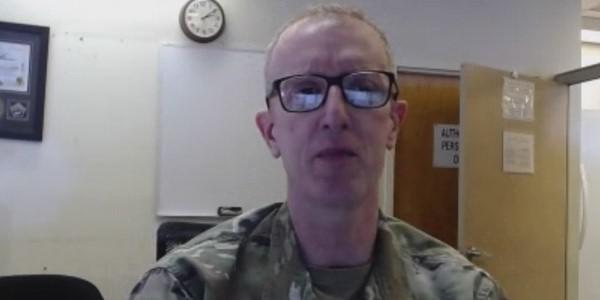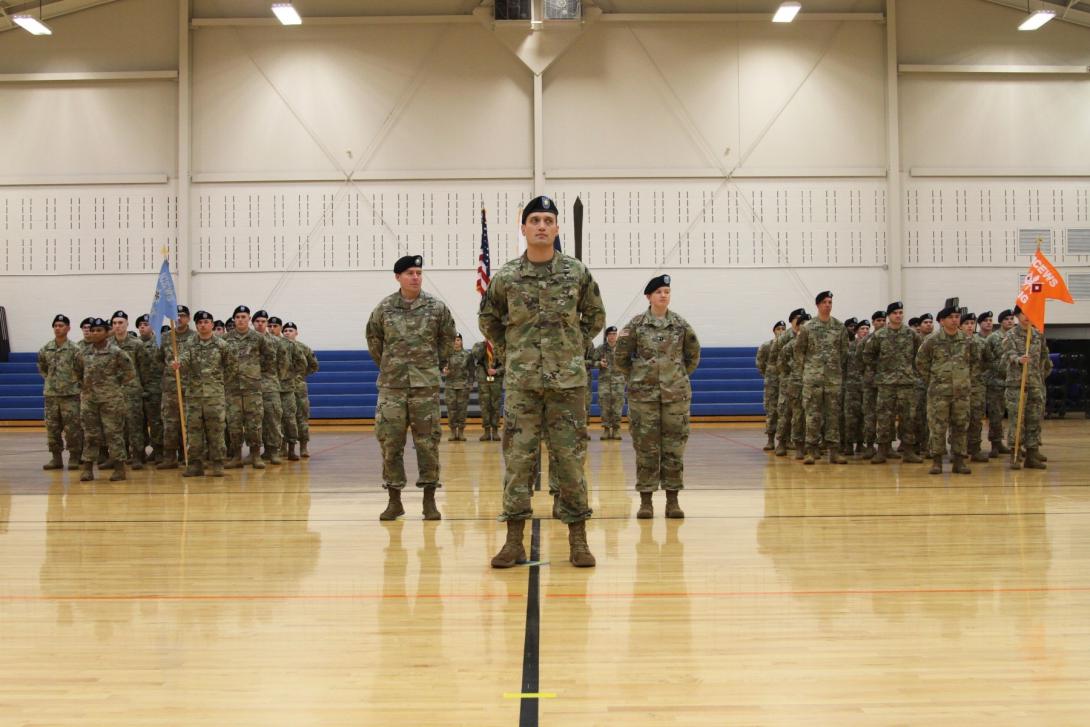The Army’s Electronic Warfare Efforts Take Center Stage
Over the last several years, the U.S. Army has worked pointedly to build up its electronic warfare capabilities. From the early days of only having small groups of electronic warfare soldiers that ventured to counter radio-controlled improvised explosive devices in Afghanistan and Iraq, the Army has since retooled its efforts. The service is pursuing a broad campaign of development, is continuing to identify capability gaps and has successfully fielded more advanced tools to operate and dominate in the electromagnetic spectrum.
In particular, the development of two main electronic warfare related capabilities—the Electronic Warfare Planning and Management Tool (EW PMT) and a spectrum analyzer capability—are on schedule. The two solutions will be a great support to the Army Signal units that are operating the service’s Integrated Tactical Network, reported Col. Daniel Holland, USA, Army Capability Manager for Electronic Warfare (ACM-EW); Cyber Center of Excellence, Fort Gordon.
“The EW PMT is the commander’s tool to control, manage and dominate the electromagnetic spectrum,” Col. Holland emphasized. “EW PMT also provides the ability to conduct remote control and management of electronic warfare assets and enables maneuver by synchronizing electronic warfare and spectrum management operations. And for years our spectrum managers have been clamoring for a program of record spectrum analyzer. The lack of an Army-wide standard spectrum analyzer, along with institutional training, support and sustainment, prevented spectrum managers from reaching their full potential.”
Col. Holland, who stepped into his position in July 2020, spoke today at AFCEA’s TechNet Augusta Virtual Solutions Series during an afternoon session entitled, Current Trends and Needs for Army Capability Development in the Electromagnetic Spectrum.
The EW PMT, a multifunctional, command and control (C2) electronic warfare planning tool, will enable soldiers to plan their electromagnetic spectrum operations, execute electromagnetic spectrum battle management, and reprogram electromagnetic spectrum sensors and shooters in the field, the colonel explained. The spectrum managers can plan their specific networks and conduct frequency deconfliction by ingesting various data sets including geospatial data, which will enable modeling and simulation of radio frequency propagation over terrain. The tool also allows the spectrum managers to process joint spectrum interference reports.
The Army’s multiyear development of the EW PMT is now moving to the fielding stage, the colonel shared. The service is preparing for initial operational testing and evaluation in first quarter of fiscal year 2022, followed by an Army-wide fielding planned to begin in the first quarter of FY23. Col. Holland also noted that select units in Europe and in the 8th Army are currently using EWP PMT in the field. “Their feedback has been invaluable in refining the application,” he added.
Col. Holland: some units are already using EW PMT. “Their feedback has been invaluable." Lou West&Chief Gill add that feedback comes in the form of software change requests to optimize use. The most telling feedback is those who don't have it are asking for EW PMT #AFCEATechNet
— Kimberly Underwood (@Kunderwood_SGNL) February 16, 2021
Meanwhile, the effort to add the much needed spectrum analysis tool also is progressing, as ACM EW is drafting the requirements for the new program of record, the colonel offered.
The spectrum analyzer, sometimes referred to as a Spec A, will allow the Army Signal Electromagnetic Spectrum Managers—also known as 25E’s—to characterize the electromagnetic operational environment in their area of operations. It is a portable senor for the 25E’s to monitor and analyze electromagnetic signals of interest and interference areas, as well as visualize their own electromagnetic signature.
“The Spec A capability that we are pursuing will be a portable piece of equipment deployed in a TOC [tactical operations center] or on a mobile platform to provide situational awareness by monitoring and analyzing the electromagnetic environment,” the colonel stated.
Notably, the spectrum analyzer’s most important performance parameter will be its interface with the EW PMT.
“By directly integrating with EW PMT, the spectrum analyzer allows the Army’s Cyber Electromagnetic Activities cells, or CEMA cells, and the 25 E spectrum managers to provide their commanders with the visualization of his or her electromagnetic spectrum footprint and will enable force protection and emissions control decisions.”
The Army’s efforts on the EW PMT and the spectrum analyzer capability are both part of a greater push to field more electronic warfare solutions. Presently, the service is in the process of rolling out a broad requirements portfolio that addresses electronic warfare solutions across four groupings: C2; effects; manned systems; and unmanned systems.
Col. Holland: We are working on a multi-function large EW air pod for sensing on group-forward UAS. This pod can sense targets & provide options to the commander, either non-kinetic or kinetic #electronicwarfare #AFCEATechNet @AFCEA pic.twitter.com/VmOe1YIxqy
— Kimberly Underwood (@Kunderwood_SGNL) February 16, 2021
The service has identified specific gaps in each grouping and is creating or getting approval of the initial capability documents, development documents or entry gate package solutions. Those efforts, once approved by the Army Futures Command, will provide the foundation to subsequently field the comprehensive portfolio of electronic warfare solutions needed to compete and win against near-peer adversaries in a multidomain warfare environment, the colonel said.
Col. Daniel Holland, ACM-EW: The @armyfutures Command is managing the activities like ACM and their electronic warfare modernization efforts as well as managing other capability management as part of the @USArmy Force modernization efforts #AFCEATechNet
— Kimberly Underwood (@Kunderwood_SGNL) February 16, 2021
On several of the initiatives, ACM EW is working with other Army Centers of Excellence—such as Fires, Aviation, Cyber, Mission Command, and the Network Cross-Functional Team (CFT), among others—to build integrated requirements for the needed solutions. For example, the Army, with the Fires community, is currently developing the concepts to address delivery of electronic warfare payloads by unmanned systems, rockets, missiles or munitions, as part of its family of delivered electronic warfare effort. For manned systems, ACM EW—with the Mission Command Center of Excellence and the Network CFT—is creating the initial capability documents for spectrum analyzer and signature management solutions for joint electronic warfare applications. In effects, the Army is seeking to roll out advanced electronic warfare countermeasures and is working with its Cyber contingent to define initial capabilities.
“The C2 and effects categories are foundational to everything else we're doing,” Col. Holland noted. “Both of these categories describe software requirements. Our C2 application is the EW PMT. The effects category includes software signatures used by our sensors to identify particular signals of interest and special purpose electronic attack payloads delivered by our nonkinetic shooters.”
Meanwhile, the manned systems will be operated by electronic warfare soldiers and will include the service’s Terrestrial Layer System, or TLS, an integrated signal intelligence and electronic warfare solution, the colonel stated. The unmanned systems, the different multifunction electronic warfare variants, will be controlled remotely by electronic warfare soldiers through the EW PMT application.
“As you can see, we are working on requirements that run the gamut from software to hardware, from terrestrial to high altitude, from the Brigade Combat Team to the multidomain taskforce I2CEWS [Intelligence, Information, Cyber, Electronic Warfare and Space] battalion,” Col. Holland observed.
Note to Industry: This spring, we are scheduling w/Col Kevin Finch, PM, PEO IEWS a second industry engagement for EW solutions & an opportunity to review classified documentation for our requirements development, says Col. Dan Holland, ACM-EW @USArmy #AFCEATechNet
— Kimberly Underwood (@Kunderwood_SGNL) February 16, 2021
Lastly, the colonel suggested that any interested industry partners should consult the service’s EW PMT software development kit, in order to potentially provide related solutions.






Comments